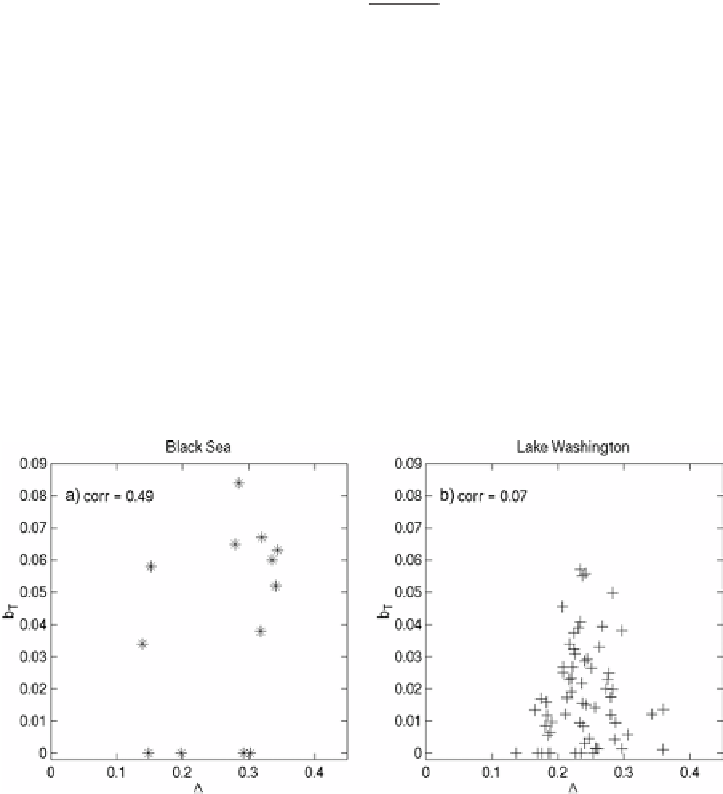Geoscience Reference
In-Depth Information
feasible in the general case and has to be done in terms of wave-related properties. For
the dominant waves, spectral-peak steepness
peak
(5.17)
-
(5.18)
was suggested and suc-
cessfully used as such a parameter (see
Section 5.2
,
Figure 5.18
and
eq. (5.19)
).
The above-mentioned wind forcing
(5.20)
and shear-current influences were further
shown to have a marginal effect on dominant-wave breaking and therefore they were
employed in the breaking parameterisation through secondary-importance parameters (see
also
Figure 5.20
for dependence of
b
T
on
γ
γ
). For the shear current, the parameter intro-
duced was
u
s
u
0
=
0
.
01
U
10
=
,
(5.21)
c
p
the ratio of the wind-induced surface current
u
s
to maximum orbital velocity
u
0
. The drift-
current velocity was adopted from
Babanin
(
1988
)as
u
s
∼
0
.
01
U
10
,
(5.22)
and the maximal orbital velocity used was that of a linear surface gravity wave with height
equal to the peak wave height
(5.18)
u
0
=
peak
c
p
.
(5.23)
The Black Sea and Lake Washington breaking-wave data sets, plotted in
Figure 5.21
a, b
for the
b
T
-versus-
dependence, show that the breaking fraction increases with the shear
parameter, although with a far lower visual correlation than seen for the peak steepness.
Figure 5.21 Observed dominant wave-breaking probability
b
T
(2.3)
versus surface-shear parameter
(5.21)
for two diverse field sites (a) Black Sea data (*), (b) Lake Washington data (+). The legend
shows the correlation coefficient based on a linear fit. Figure is reproduced from
Banner
et al.
(
2000
)
© American Meteorological Society. Reprinted with permission

Search WWH ::

Custom Search